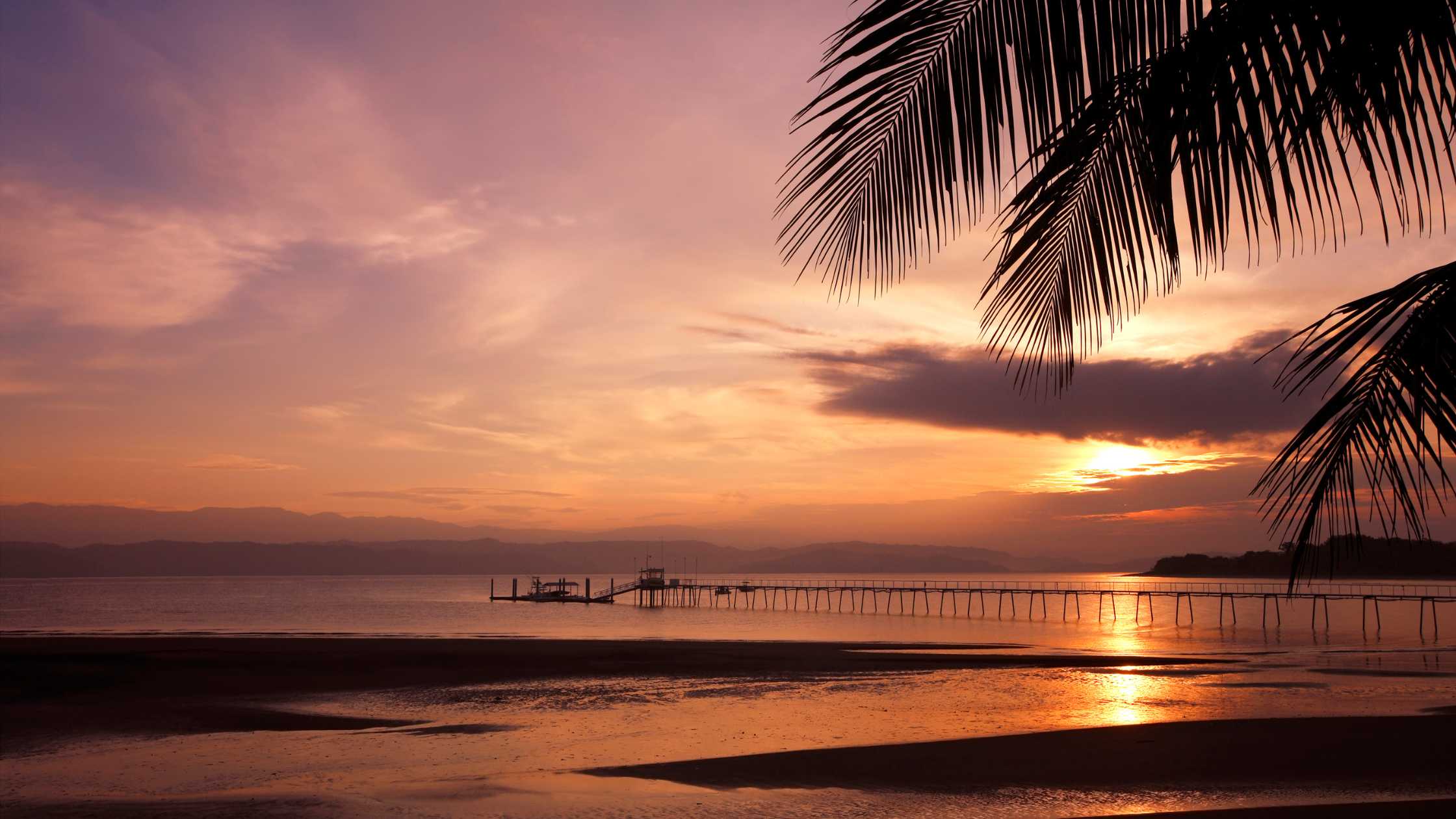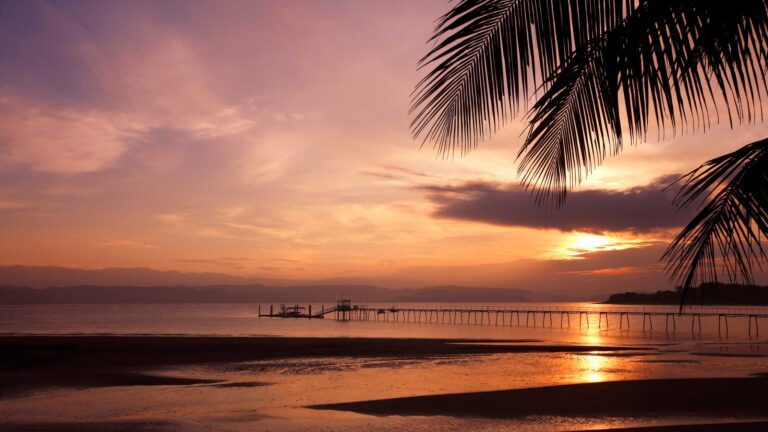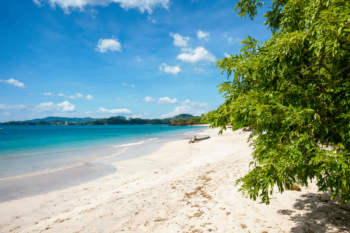Osa Peninsula Costa Rica: What's Covered
Osa Peninsula sits on Costa Rica’s Southern Pacific Coast, recognized by National Geographic for harboring 2.5% of the world’s biodiversity despite covering just 0.001% of the planet. You’ll find two distinct regions: Drake Bay (northwest, boat or airstrip access) serving Corcovado National Park and Caño Island, plus Puerto Jimenez on Golfo Dulce (one of only three tropical fjords worldwide) with vehicle access. Dry season December-April offers best conditions with 90°F temperatures, while green season May-November brings afternoon showers and high humidity. Having 4×4 transportation reaches Puerto Jimenez side, though Drake Bay requires boat transfers from Sierpe.
Quick Facts:
- Corcovado National Park requires certified guides since 2014 – book through lodges or tour operators
- Caño Island sits 12 miles offshore, featuring pre-Columbian stone spheres and premier diving/snorkeling
- Golfo Dulce’s 80-degree turquoise waters attract dolphins year-round, seasonal whale migrations
- Piedras Blancas National Park accessible via boat from Puerto Jimenez to jungle lodges
- Pack quick-dry clothes, sturdy hiking boots, rain jacket, and insect repellent for rainforest conditions
Top 3 Osa Peninsula Regions:
- Corcovado National Park – Central America’s most extensive lowland rainforest protecting all four Costa Rican monkey species, both sloth varieties, and second-largest scarlet macaw population after Carara. Endangered jaguars and pumas inhabit deeper forest.
- Drake Bay & Caño Island – Remote Pacific gateway reached by boat offering pristine snorkeling and scuba diving, mangrove tours, whale watching, and sport fishing from jungle lodges surrounded by primary rainforest.
- Golfo Dulce & Puerto Jimenez – Tropical fjord with calm waters perfect for kayaking, paddleboarding, and dolphin watching. Adjacent Piedras Blancas National Park spans 30,000 acres with waterfall hikes and wildlife encounters.
Unlike accessible beach towns in Guanacaste or Manuel Antonio, Osa Peninsula rewards travelers seeking authentic rainforest immersion with minimal development and maximum biodiversity.
If you need any help with a Costa Rica car rental, contact us now!
 The Osa Peninsula, nestled along Costa Rica’s Southern Pacific Coast, is a prime rainforest spot recognized by National Geographic for its unparalleled biodiversity.
This pristine expanse borders Drake Bay to the northwest, the Pacific Ocean to the west, and the Golfo Dulce to the east. Unspoiled landscapes, secluded shores, and wildlife thrive here amidst lush primary rainforests and diverse freshwater and marine ecosystems.
The Osa Peninsula, nestled along Costa Rica’s Southern Pacific Coast, is a prime rainforest spot recognized by National Geographic for its unparalleled biodiversity.
This pristine expanse borders Drake Bay to the northwest, the Pacific Ocean to the west, and the Golfo Dulce to the east. Unspoiled landscapes, secluded shores, and wildlife thrive here amidst lush primary rainforests and diverse freshwater and marine ecosystems.
Drake Bay by the Pacific Ocean
Perched on the western edge of the Osa Peninsula and reachable by boat or a small airstrip, Drake Bay is the gateway to two prominent attractions: Corcovado National Park and Caño Island Biological Reserve. These destinations promise adventurous travelers an authentic encounter with nature. Venture along forest trails, discover waterfalls, meander beside spring-fed rivers, and explore tide pools. Indulge in some of Costa Rica’s finest snorkeling and scuba diving experiences, all while residing in a top-notch jungle lodge enveloped by rainforest tranquility.Corcovado National Park
Corcovado National Park, situated on the western flank of the Osa Peninsula, is its primary natural gem. Renowned for its unparalleled richness and diversity, it’s hailed as one of the most vibrant tropical areas globally. Encompassing nearly half of the peninsula’s expanse, this park boasts Central America’s most extensive lowland rainforest. Here, you’ll encounter abundant wildlife, including a substantial population of scarlet macaws—second only to Carara National Park—and all four species of monkeys and sloth varieties. Among the more elusive inhabitants are endangered jaguars and pumas. Since 2014, park regulations have mandated that visitors be accompanied by a guide, a measure aimed at preserving the park’s ecological integrity. Many lodges in the region offer day tours to this natural wonder, ensuring visitors can easily and insightfully experience its magnificence.The Cano Island Biological Reserve
Cano Island Biological Reserve – accessible from Drake Bay Twelve miles offshore of Drake Bay is Cano Island, home of Cano Island Biological Reserve. The island was once used as a cemetery in pre-Columbian times and is where many of the mysterious stone spheres of Central America are located, thought to have been carved by pre-Columbian natives by scientists. Today, Cano Island is especially popular for diving and snorkeling. Related Article: 9 Best Costa Rica National Parks & ReservesDrake Bay Attractions
- Corcovado National Park
- Caño Island
- Pristine Rainforests & Beaches
- Wildlife & Marine Life

Things to Do from Drake Bay
- Corcovado National Park Hike
- Snorkeling & Scuba Diving
- Mangrove Boat Tour
- Sport Fishing
- Dolphin & Whale Watching Tour
- Bird Watching
Puerto Jimenez & the Golfo Dulce
The sheltered expanse of the Golfo Dulce (Sweet Gulf) is located on the eastern edge of the Osa Peninsula, a protected inner coast acclaimed as one of the world’s three tropical fjords. Pristine beaches encircle this hidden treasure of Costa Rica and teem with the remarkable biodiversity characteristic of the region. Among the many tourist attractions in Costa Rica, Golfo Dulce stands out as an ideal haven for nature enthusiasts. Whether you’re craving an authentic adventure or seeking the serenity of an untouched paradise, this tranquil gulf promises to fulfill your desires. Dolphins and whales frequently grace the waters of Golfo Dulce, adding to its allure. With its inviting 80-degree turquoise waters, this stunning gulf serves as a haven for dolphins, seasonal whale migrations, and many aquatic activities such as swimming, kayaking, snorkeling, and fishing. Surrounding this picturesque oasis is a lush tropical rainforest with abundant hiking trails. Here, adventurers may encounter the full spectrum of Costa Rica’s monkey species—including spider, white-faced, squirrel, and howler monkeys—as well as an array of other fascinating creatures such as Poison Dart frogs, Morpho butterflies, anteaters, agouti, coati mundi, jaguars, ocelots, and margays.Go To Piedras Blancas National Park
Nestled adjacent to Piedras Blancas National Park, Playa Nicuesa Lodge offers a unique proximity to one of Costa Rica’s natural treasures. Encompassing 30,000 acres of pristine primary and secondary forests, Piedras Blancas National Park is a sanctuary for biodiversity. Visitors can access their lodgings bordering the park—Playa Nicuesa Lodge or Playa Cativo Lodge—via a boat ferry journey across the Gulfo Dulce from Puerto Jimenez. Alternatively, the ferry provides transportation to the town of Golfito. This seamless connection to nature and convenience makes exploring the wonders of Piedras Blancas National Park effortless and unforgettable.Top Puerto Jimenez Attractions
- Pristine Rainforests & Beaches
- Gulfo Dulce
- Piedras Blancas National Park and the Esquinas River
- Wildlife & Marine Life
A Few Things To Do from Puerto Jimenez
- Waterfall Hike
- Golfo Dulce Dolphin Watching & Snorkeling
- Kayaking
- Stand Up Paddle Boarding
- Surf Lessons
- Botanical Garden
- Wildlife Sanctuary
Osa Peninsula Travel FAQ:
The climate on the Osa Peninsula fluctuates between distinct seasons: the Dry Season spans from December to April, while the Green Season dominates from May to November. Temperatures typically soar to around 90°F, reflecting the region’s tropical climate. Expect daily afternoon showers during the Green Season, which is characteristic of the tropical rainforest environment, alongside high humidity levels. For a visit to the Osa Peninsula, pack essentials such as beachwear, quick-drying attire, insect repellent, sturdy hiking shoes or boots, and a reliable rain jacket to stay prepared for any weather conditions. Renowned for its biodiversity, the Osa Peninsula is mainly celebrated for the wildlife haven of Corcovado National Park and the mesmerizing turquoise waters of the Golfo Dulce, drawing nature enthusiasts from around the globe.




